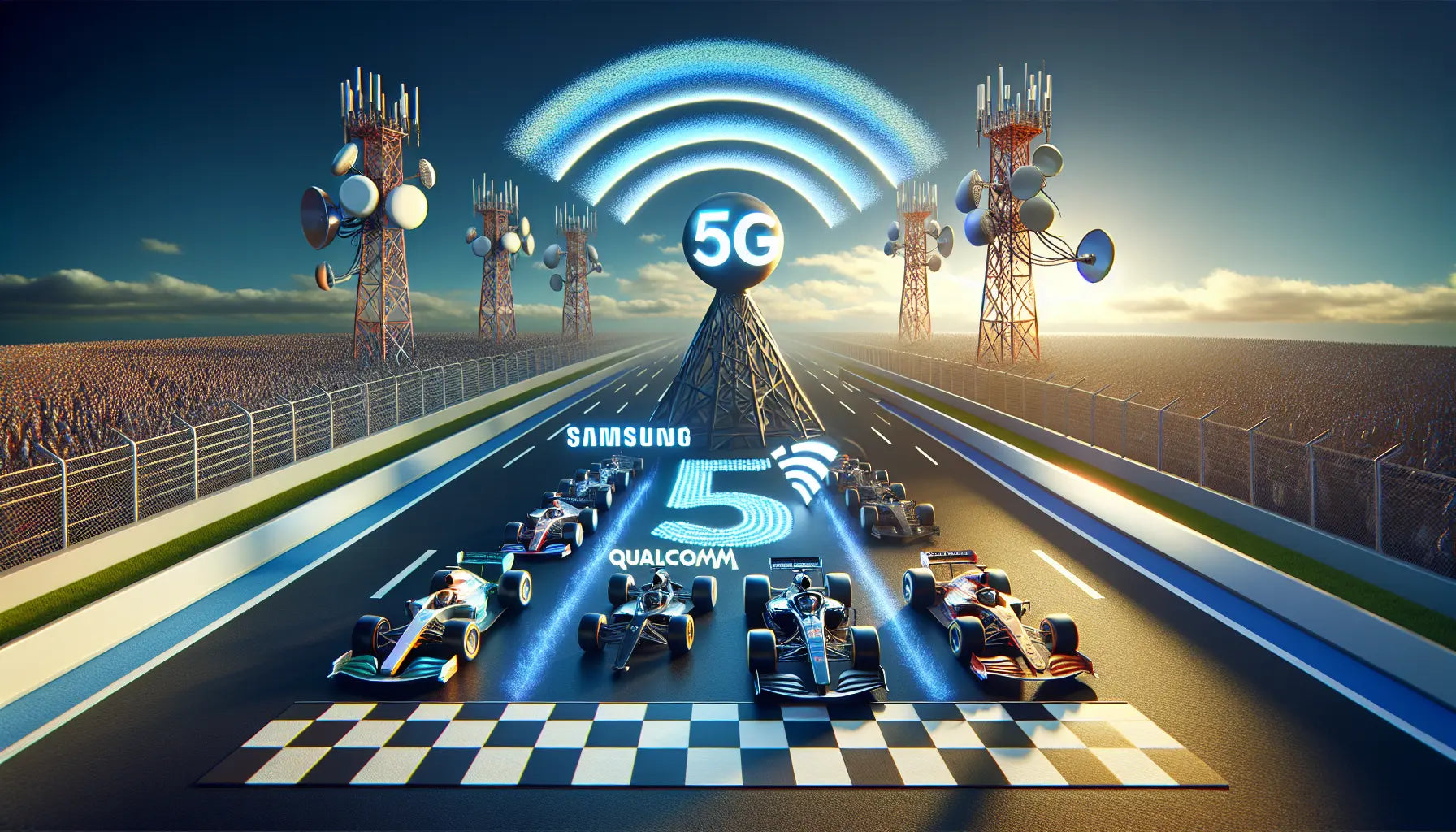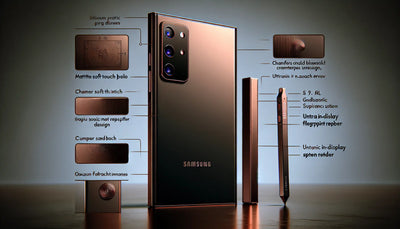Introduction
Huawei has in recent times released its annual report for 2023, which looks into the performances and successes the company has scored throughout the year. As the report highlights, there is continuity for Huawei and its growth even amidst several challenges. These also depict its commitment in research and innovation, whereby it has an eye on ICT infrastructure, terminal, cloud computing, digital energy, and intelligent car solution businesses. The report also discloses the investment of Huawei in R&D, whereby they have spent 164,000 billion Dhs.
This paper has been developed in order to provide a summary of the main highlights that would be included in the annual report of Huawei for the year 2023 and provide insights into the performance and future-looking of the company.
Huawei's Market Performance
The annual report, published by Huawei in 2023, shows the good level of general business performance by the company: by December 31, 2023, the worldwide sales income accounted for 74.2 billion RMB.
The business of Huawei ICT infrastructure: sales revenues of 362 billion Dhs, with a year-on-year increase of 17.3% in its terminal business, reaching 21.5 billion Dhs in sales revenues. Its business revenue from cloud computing achieved 55.3 billion RMB, an increasing rate of 21.9%, while the total smartphone market in China continued to indicate a decrease, this time by 7%. In the first six weeks, the company increased phone sales by 64%. Market share moved from 9.4% to 16.5% and overtook Apple in the Chinese smartphone market.
Furthermore, this year, in the first 6 weeks, its market share soared from 9.4% to 16.5%, further consolidating its position on the market. While this left an offset in consumer confidence, Huawei had increased its production capacity and met the demand for its popular Mate 60 series.
Furthermore, according to the news, sales revenue from the terminal business has hit 21.5 billion Dhs, which showed an increment of 17.3% from a year earlier during the first six weeks of this year, and even the market share has also risen from 9.4% to 16.5%. This statistics means that Huawei is very strong in resilience, and clear signs of growing market power are visible, which could put this company among the key players in the Chinese smartphone market.
The Return of Huawei's Kirin Chips
Four months after being suppressed due to the lack of OEM factories, Huawei's Kirin chips have made a comeback. Great show from the Huawei Mate 60 series of foldable smartphones, which also includes the Kirin 9000. It has also contributed in a big way to pushing up Huawei's market share in the chip market.
Huawei's HiSilicon shipment volume in the global chip market increased by 51.1%, to the sixth with a share in the fourth quarter of 2023. Nevertheless, despite the massive growth, shipment volumes reported to have exceeded 7 million pieces in the fourth quarter of 2023 for Huawei's HiSilicon and control from the US government through difficult sanctions. And year-on-year, Huawei's HiSilicon soared in sales by 244.71%, with sales revenue surpassing that of Samsung for the first time.
This spells resurgence for Huawei, signaling that it can face any thrown challenge and, in fact, draw a spot victorious into the world's technology arena. The new Huawei processor, the self-developed Kirin 9900 of a new generation, has awaited its excellent performance in processing large-scale applications, games, and processing of images. The Kirin 9900 is another best energy-efficient chip that holds advanced process technology and has super computing power; furthermore, the fifth-generation mobile communication technology enhances much of the performance and user experience.
The Impact of US Sanctions on TSMC
The other way through which US sanctions and controls affect the Taiwan Semiconductor Manufacturing Company (TSMC) is the fact that the company contributes very immensely to the global technology field. TSMC is the leading company in the foundry industry of semiconductors, producing chips from CPUs to GPUs for all types of clients, chips for mobile devices, and lots of different sensors.
However, in 2020, the U.S. government came up with a policy that barred TSMC from producing Advanced 7 nanometer chips for Huawei in China. The decision had been reached to be a very big threat to TSMC since the later had ranked Huawei among its key clients. TSMC continues to look for diversified markets, but the risks do not disappear because at any time, the US government can crack down on the company. Meanwhile, the US government has also been luring TSMC to transfer part of its production lines to the US mainland.
This has led to uncertainty about the future of TSMC and its impact on the global technology landscape.
More so, Huawei's HiSilicon Kirin chips received a huge blow in its semiconductor business by the US technology blockade.
These sanctions and controls have thus affected the global technology industry and, in effect, left questions about whether TSMC really has a future with its ability to move past the same challenges.
Comparison of Kirin 99100 and Dimensity 9300
Kirin 99100 is Huawei's self-developed new generation processor, which takes the top performance in processing large applications, running games, and image processing. It employs advanced process technology and has powerful computing capacity to a frequency of 313GHz. With that said, the eight small cores have a very powerful and efficient computing capacity, and the eight energy-saving cores also support the fifth-generation mobile communication technology, AI computing, image processing, and security encryption, allowing performance to be boosted and user experience upgraded on the Huawei device.
The maximum main frequency of the Kirin 99100: 313 GHz
The energy efficiency of the Kirin 99100: improved battery life and power consumption control
Support for fifth-generation mobile communication technology, AI computing, and image processing
On the other hand, the Dimensity 9300 is built along with the Mount Tyan architecture, which sets up a firm foundation for a powerful in5 technology octa-core. Such single-core and multi-core expected performance are at the leadership level or approaching, if not equal to, the processor being sold in the market, Snapdragon 8 Gen 2.
On the GPU front, it rocks the Mali-G20 core clocking up to 750 MHz of speed, offering great performance in both graphics rendering and gaming. To add up on the specifications, it comes with Kieran ISP 8.0 and Aron 6000 baseband for more enhancement in photography and performance in communication. Dimensity 9300 single core running score: 1400-18800
Dimensity 9300 multi-core running score: 4600-4800 GPU frequency: up to 750 MHz.
US Subsidies for Chip Manufacturers
This is to be judged in the light of such strong competition by foreign manufacturers, on the basis of which the government of the United States has introduced the policy of introducing subsidies for domestic chip factories. Earlier, it had subsidized two domestic chip factories for the production of local chips.
The aim is to boost local chip factories' operations and strengthen the position in the global semiconductor industry.
On the other hand, the United States government announced more subsidies to chip manufacturers. Intel would become eligible for a historical subsidy totaling $10 billion. This big amount demonstrates how this government is committed to supporting the growth and development of the semiconductor industry in the country.
It reported that the United States is ready to provide subsidies for TSMC and Samsung: the subsidy of $5 billion for TSMC and $6 billion for Samsung.
These subsidies reflect a state favor to great manufacturers with funding, further signaling skyrocketing competitiveness of the US semiconductor industry.
This is where such subsidies, in fact, give chip-makers a reason to shift plans for mass production and increase investment in terms of building factories outside of the United States.
The response to these has effectively served to underscore the role of financial support as a key driving factor for the growth and expansion in the semiconductor industry, home and abroad.
FAQs
1. In which way the Huawei's 2023 annual report is concentrated mainly?
Huawei's 2023 annual report stated in the headlines their concentration on the concept of pervasive intelligence, creating captivating user experiences for customers, and forming strong digital ecosystems. The critical measures were the substantial enhancements in digital and intelligent transformation while keeping the HarmonyOS area-expanding, and continuing with cloud innovations and services.
2. How is growing was Huawei sales revenues this year?
In the year 2023, Huawei’s revenue, counted in global dollars, was about CNY 704.2 billion. This figure was the same as the revenue expected by the company.
3. How did Huawei's mobile phone, which is only available in the cloud, dominate the sales during the first 6 weeks of 2024?
At the moment I have not been able to acquire data about Huawei mobile phones sales performance for the first 6 weeks of 2024.
4. Did Huawei use a specific chip technology in 2023 and On the other hand how missing of Huawei's chips is affecting its market position?
Last year, Huawei employed cutting-edge chip technology, however there were no specific details aired up regarding the chip models applied or a deeper analysis on how it will affect the return of Kirin chips provided in available data.
5. In what way did US sanctions contribute to the difficulties TSMC has experienced, and what might be the possible aftermath on the world technology market?
The effect of US sanctions firstly on TSMC and the world technology landscape generally has not been explicitly brought into the Huawei report, but generally speaking such sanctions can affect the links of supply chains and development schemes of technology companies worldwide.
6. What are the most important highlight feature and performance of Huawei's Kirin 99100 processor?
Desirable Kirin 99100 information has been inaccessible or there isn’t any news about its availability as of the latest reports; this suggests that it may be a speculative or it might be a future product.
7. What technical capability does Kirin 99100 of Huawei offer concerning the CPU and GPU compared to the Dimensity 9300?
As the information about Kirin 99100 doesn't specify details, I am afraid to compare it with Dimensity 9300 yet.
8. What new subsidies the United States is to items manufacturers and what of this is?
This question of specifics had being missed out among the Huawei annual report context. Usually, the US subsidy on fab plants is targeted at expanding local production capacities and cutting dependence on foreign chip manufacturers.
9. Which of China's measures, that is, reaction to US sanctions and technological blockades, have changed the overall technological portrait on the global stage?
The annual report doesn’t address this point directly but it is clear that Huawei and other Chinese Tech companies are making more efforts for successful self-reliance and tapping into domestic technological talents due to the US sanctions.
10. How has there been a change in the mindset of these tech companies due to the subsidies from the United States?
The geopolitical pressure as well as supply chain security heightens the demand for local chip manufacturers that can increase local manufacturing capability and secure sovereignty technology.






















